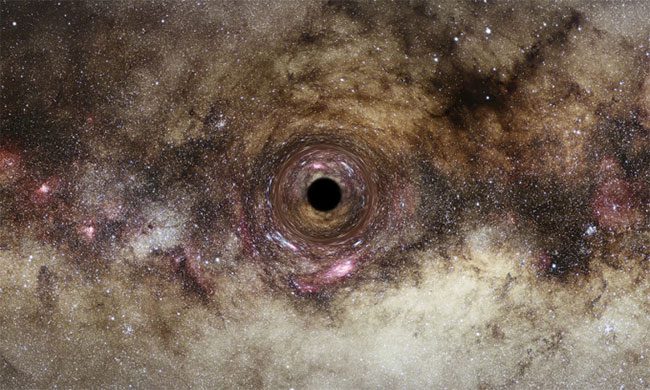The Sun Has the Potential to Destroy Earth in a Few Billion Years, but It Will Not Become a Black Hole.
In about 5 billion years, the Sun will reach the end of its nuclear fuel-burning phase and will no longer be able to withstand its own gravitational pull. The outer layers of this star will expand—a process that could potentially obliterate Earth—while the core collapses into an extremely dense state, leaving behind a stellar remnant. If the gravitational collapse of the stellar core is completed, the remnant will become a black hole—a region of spacetime with such strong gravitational effects that not even light can escape.

Simulation of a black hole in space. (Image: ESA/Hubble/Digitized Sky Survey/Nick Risinger/N. Bartmann).
However, the Sun will not become a black hole. “It’s quite simple: the Sun does not have enough mass to become a black hole,” said Xavier Calmet, a black hole expert and physics professor at the University of Sussex (UK).
There are many factors that determine whether a star can become a black hole, including its composition, rotational motion, evolutionary processes, but the primary requirement is the appropriate mass. “Stars with an initial mass about 20 to 25 times that of the Sun have the potential to undergo the gravitational collapse necessary to form a black hole,” Calmet explained.
J. Robert Oppenheimer and his colleagues were the first to calculate this threshold, known as the Tolman-Oppenheimer-Volkoff limit. Currently, scientists believe that a dying star must leave behind a core with a mass of about 2 to 3 times that of the Sun to create a black hole.
When a star exhausts its nuclear fuel in the core, nuclear fusion from hydrogen to helium continues in the outer layers. Therefore, as the core collapses, the outer layers expand and the star enters the red giant phase.
When the Sun becomes a red giant in about 6 billion years (which is one billion years after it runs out of hydrogen in the core), it will expand to approximately the orbit of Mars, potentially engulfing the inner planets, including Earth. The outer layers of the red giant will gradually cool over time and spread out, forming a planetary nebula around the smoldering core of the Sun.
Stars that form black holes must undergo several stages of collapse and expansion, each time losing additional mass. This is because, under high pressure and temperature, stars can synthesize heavier elements. This process continues until the stellar core is made of iron, the heaviest element a star can create, and that star then explodes as a supernova, losing even more mass.
According to NASA, typical stellar black holes (the smallest type of black holes observed by astronomers) weigh 3 to 10 times more than the Sun, and this number can reach up to 100 times. Black holes will become heavier as they consume surrounding gas and dust, even swallowing companion stars if they were once part of a binary star system.
The Sun will never reach the iron synthesis stage. Instead, it will become a white dwarf, a dense star with a size comparable to that of Earth, according to Calmet. Therefore, Earth will not face the horror of being consumed by a black hole.


















































